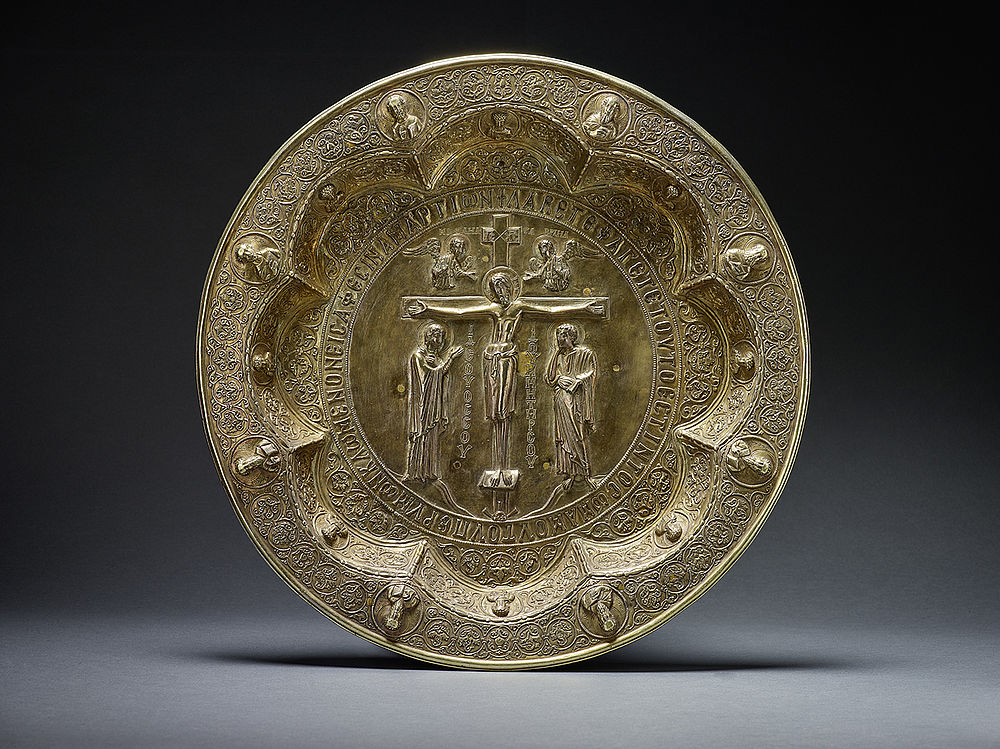Paten
Byzantium, 11th/12th century, inv. no. DS036
Silver, gold-plated, cast, repoussé, chased, engraved
How did a large, richly decorated bowl made from 2.25 kg of silver and gold get from Constantinople to Halberstadt in 1205? This precious, historically exciting work of art itself provides information about its history: the central medallion depicting the Crucifixion is surrounded by a Greek inscription saying, “Take, eat; this is my body, given to many for the forgiveness of sins”. Christ’s words at the Last Supper and the depiction indicate that the platen was used to hold bread at the Eucharist. This was celebrated with large loaves not by the Catholic Church, but the Orthodox Church. On the edge of the plate, medallions with portraits of martyrs and holy bishops of the Eastern Church encircle the scene, separated by arabesques. The episcopal saints and the Greek inscriptions confirm its origins in the Byzantine Empire.
The paten probably came from Constantinople itself; the Halberstadt bishop Konrad von Krosigk brought a plate of that type home from there and donated it to the cathedral in 1208.

